Step-By-Step Help
Step-By-Step Help
Cheri provides Step-by-Step help connecting you with professionals, understanding test results, and working with you to develop an intervention plan.
Schedule a FREE Phone Session with Cheri
Moore Auditory-Visual Observation Activity Booklet
Step-By-Step Help Learning What to Observe and How to Observe using the Moore Auditory-Visual Observation Activity Booklet.
Schedule an in-home or in-office appointment to have Cheri complete observation activities and much more.
Do you have visual processing difficulties?
Observation activities show you how to watch a person’s eyes and body while they track a moving object with their eyes. Do you change the position of your body or head to keep vision clear while you look at a target? Do you use one eye more than the other? Regardless of where you live, completing activities help you learn how your eye work together.
Activities are not required to complete a Moore Auditory-Visual Questionnaire.
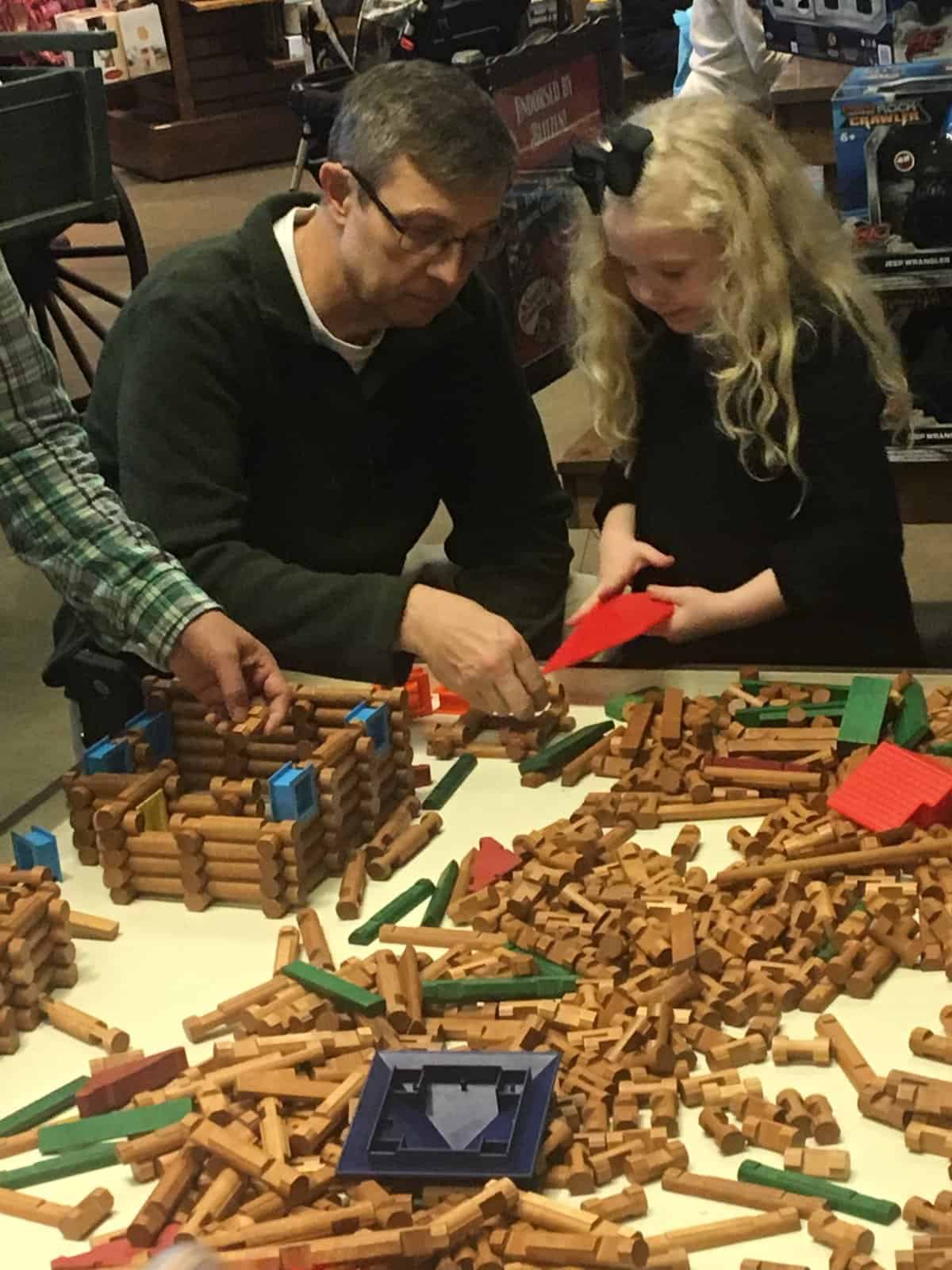
Step 1: Schedule a Phone Call
The first step is to schedule a phone call. While teaching, Cheri started looking for answers to confounding behaviors. Later, Cheri noticed patterns of mismatch between auditory abilities and visual abilities. For example, despite being able to tell wonderful stories, the person may struggle to put their thoughts in an order that makes sense while writing. Equally puzzling, despite being a gifted artist, reading fluency is difficult. After more than twenty years of experience, Cheri listens and offers insights.
When to Schedule a Home Visit
Cheri hopes that talking with her will help you decide if you would like to complete a Moore Auditory-Visual Questionnaire or schedule a visit. Cheri works with clients in Hampton Roads and Northern Virginia. Using observation activities, Cheri learns about client’s auditory and visual processing skills. Before arriving, parents tell their child that Cheri is coming to help Mom and Dad teach them. For example, Cheri listens to speech patterns and observes eyes and body posture during activity. Through purposeful play, Cheri observes instinctive visual processing and auditory processing behaviors. Equally important, Cheri uses calibrated audio equipment to learn how well both ears work together. Information helps you complete a Moore Auditory-Visual Questionnaire.
Step-by-Step Video Help
Step-by-step video help is available under our Questionnaire Menu. Before beginning your Moore Auditory-Visual Questionnaire, I encourage you to watch the Technology Video shows the importance of keeping your browser and computer up-to-date. The Registration Video explains security and usage.
If you still have questions, review the Questionnaire help to ensure you update your browser window. Learn how to turn on your computer “cookies.” Cookies allow you to access your questionnaire anytime in the future after software updates.
Step 2: Register
Your second step is to register for a Moore Auditory-Visual Questionnaire. When you register, you create an account. Then, you can choose a questionnaire. There are three questionnaire choices: preschool, student, or adult questionnaire. Once you have an account, you can purchase an unlimited number of questionnaires. After you register, improve the accuracy of your answers by watching video to learn how Cheri words questions. Learn how to exit, take a break, and return later. Most importantly, learn how to request your Moore Auditory-Visual Questionnaire Report.
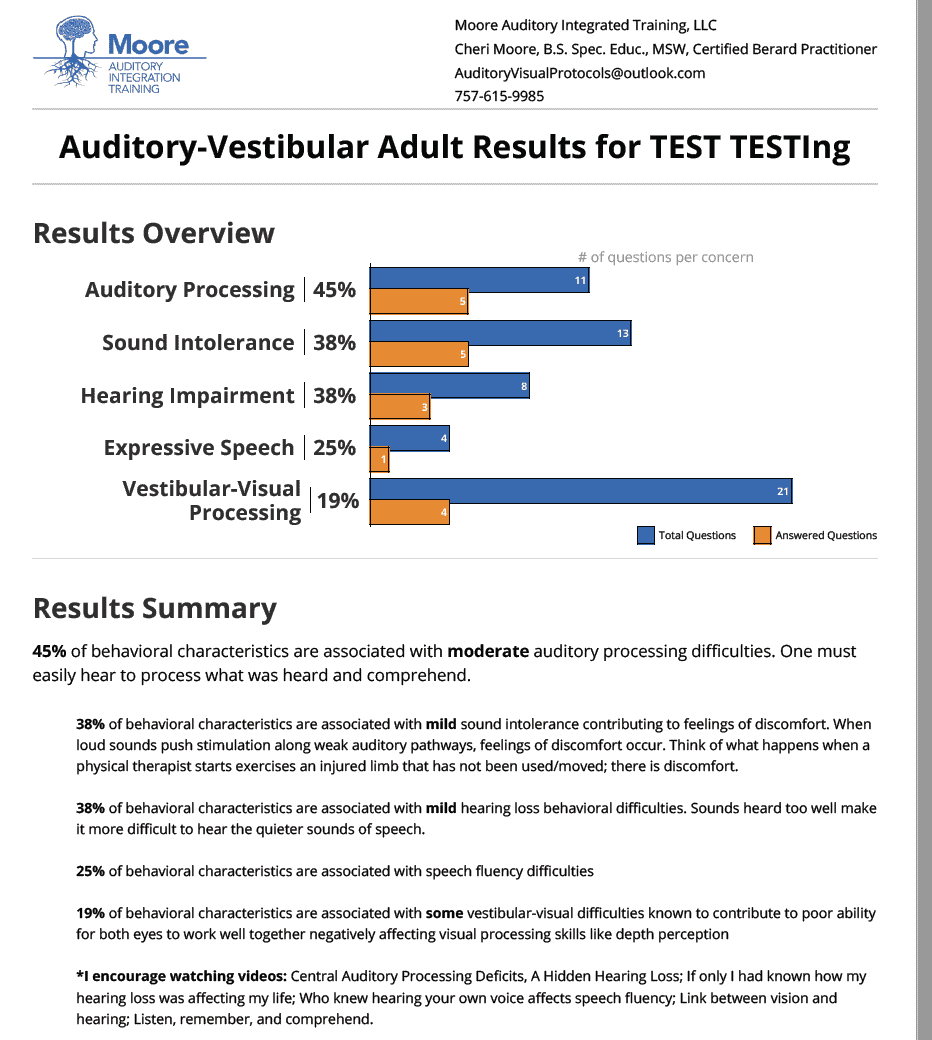
Step 3: Complete a Moore Auditory-Visual Questionnaire
Your third step is to complete your Moore Auditory-Visual Questionnaire. Once you have completed your questionnaire with a loved one or Cheri, you will receive an automatically generated Moore Auditory-Visual Questionnaire Report.
Your questionnaire report is stored in two separate places, which keeps your information confidential. Even Cheri is unable to see your Moore Auditory-Visual Questionnaire Report.
Step 4: Save and Share Your Moore Auditory-Visual Questionnaire Report with Cheri
After you save your Moore Auditory Visual Questionnaire Report, attach it in an email to Cheri (auditoryvisualprotocols@outlook.com)
Schedule a phone session!
Step 5: Work With Cheri
If you have decided to work with Cheri, email her your Moore Auditory-Visual Questionnaire Report and schedule a phone conference. Cheri works with you step-by-step helping you prepare for appointments with professionals, audiologists, and doctors specializing in your area of concerns.
Step 6: Complete Hearing Tests
Depending on your Moore Auditory-Visual Questionnaire Report, Cheri may recommend a screening assessment for Central Auditory Processing Deficits called Test of Auditory-Visual Skills (TAVS). Afterwards, Cheri writes a report and provides step-by-step recommendations helping you prepare for an appointment with an audiologist specializing in your area of concerns.
When there is sound intolerance behaviors, Cheri provides a letter sharing concerns and a request for hearing tests not normally completed during a routine exam.
Cheri provides activities to prepare clients for hearing tests that do and do not require a response.
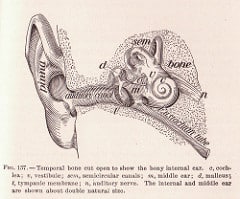
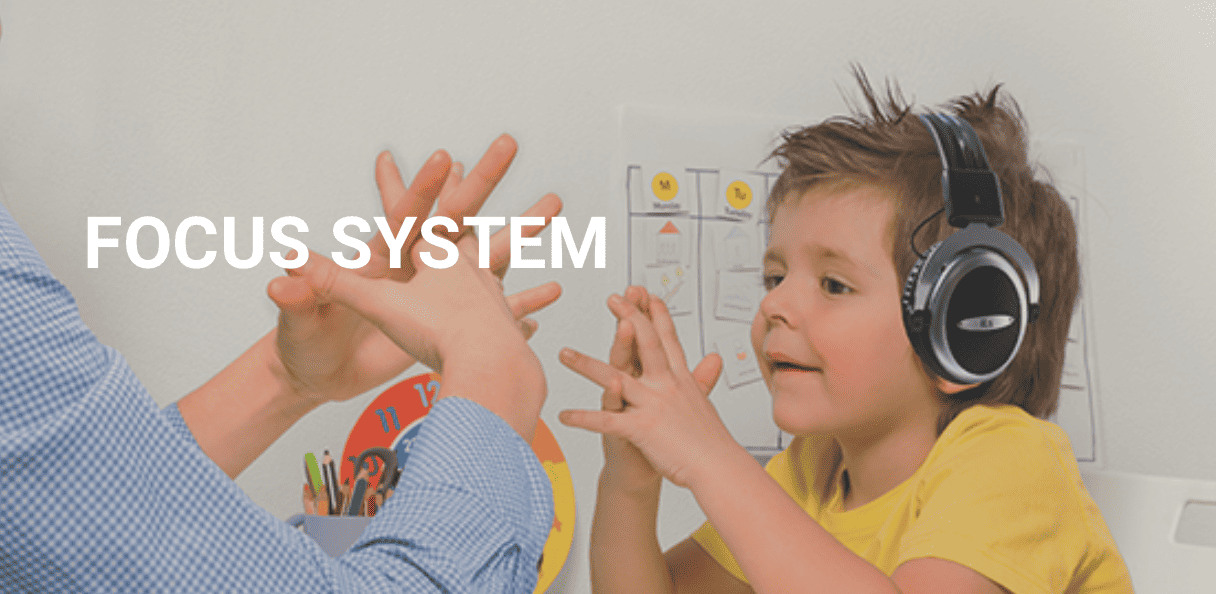
Step-By-Step Explanation of Hearing Tests
While you wait for test results, Cheri provides letters of accommodations and educational documents helping you to advocate for 504 school accommodations and workplace accommodations. Hearing test results are reviewed to learn if you are a good candidate for auditory integration training. Cheri reviews your hearing test results with you and writes an explanation of hearing test results.
Hearing Test that Requires No Response
- Ipsilateral & Contralateral Acoustic Reflexes assess middle ear bone movements
- Outer cochlear hair responses
- Eardrum movement and pressure
- Fluid can exist without an ear infection
Hearing Tests that Require a Response
- The health of inner cochlear hair assess how well you hear
- Uncomfortable Loudness Test assess how well you tolerate sounds
- Speech in Quiet

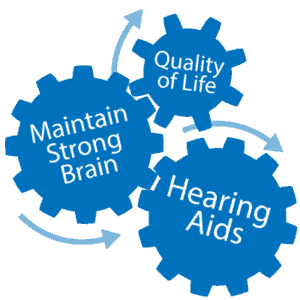
Step 7: See an ENT Doctor
Most audiology practices recommend you see an ear, nose, and throat doctor. Sometimes, past clients’ hearing loss and sound intolerance were caused by poor ear, nose, or throat health. In past clients, the ENT doctor removed impacted ear wax; repaired holes in both eardrums; and found eustachian tube dysfunction. Allergy testing revealed food allergies and food intolerances. Dietary changes improved eustachian tube function. Then, clients were able to successfully complete auditory integration training. It is stressful to learn there is no eardrum movement. Therefore, reduce your stress by seeing an audiologist and ENT doctor soon the same day.
Step 8: Find a Developmental Optometrist
Thankfully, national search engines help you find a developmental or neuro-optometrist near your home specializing in visual processing difficulties. Once you receive your report, email it to Cheri. Then, schedule a phone call to more fully understand your report. Typically, clients need vision therapy when the optometrist finds visual processing concerns.
Vision Therapy
Your visual processing evaluation determines your need for vision therapy. Vision therapy is a neurocognitive training program. Your ability to keep vision single and clear enhances your memory. As you make progress, movements will become more instinctive, automatic. Then, you are ready for an online neurocognitive training program called, Home Training System (H.T.S.).
Auditory-Visual Training Protocol, A Step-By-Step Intervention Plan
Cheri reviews hearing test results and visual processing test results before providing step-by-step recommendation help. If hearing test results show client is a candidate for auditory integration training, Cheri reviews with you choices, cost, and educational documents. When you need financial help, Cheri connects you with resources like the Lion’s Club, to help with the purchase of glasses.
Cheri also provides teaching tips, test accommodations, and even cooking tips for optimal ear health. Since auditory integration training only lasts ten to fifteen days, clients are able to start vision therapy, and then take a break for auditory integration training. When hearing test results show significant distress, clients start with auditory integration training.
Moore Auditory-Visual Observation Activity Booklet
Activities help you learn what to observe and how to observe improving recognition of visual and auditory processing difficulties. Additionally, activities help you understand how your loved one copes with visual processing difficulties. Unfortunately, auditory integration training does not correct visual processing difficulties. Past clients still needed vision therapy despite completion of Brain Integration Exercises, writing eights, and auditory training.
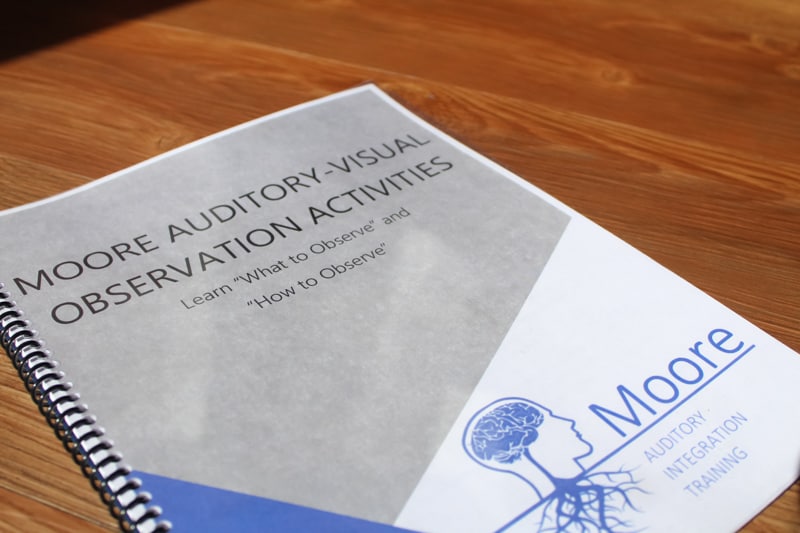
Step 9: Auditory Integration Training
Auditory Integration Training improves the strength of auditory neural pathways. In 2016, research findings supported 1990, research revealing stronger auditory neural pathways after completion of one Berard Auditory Integration Training program. After iLs training, researchers found improvements in attention, listening, and auditory processing skills.
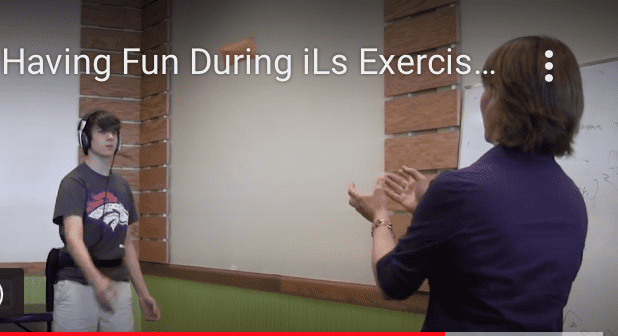
During the first five days, you listen to therapeutic music twice a day for thirty minutes.
Then, you rest on the sixth day. Some clients need a follow-up hearing test. Your hearing evaluation results determine your next listening program.
During the second half of your program, you listen twice a day for thirty minutes. While you listen, you also enjoy activities. After a phone call with Cheri, a decision is made to either continue for three to five more days or take a break
Vision Therapy occurs before or after your first auditory integration training program. Breaks from in-office vision therapy occur during auditory integration training. Cheri works with your optometrist to learn the client’s ability to complete which visual games.
- Three months later, you may complete 15 more listening sessions.
- Six months later, all clients complete a second auditory integration training program. You listen to therapeutic music for ten days, twice a day, for thirty minutes.
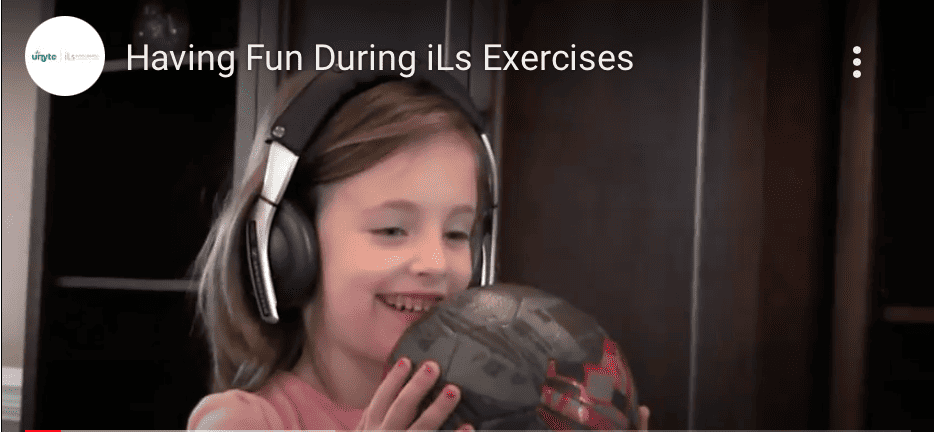
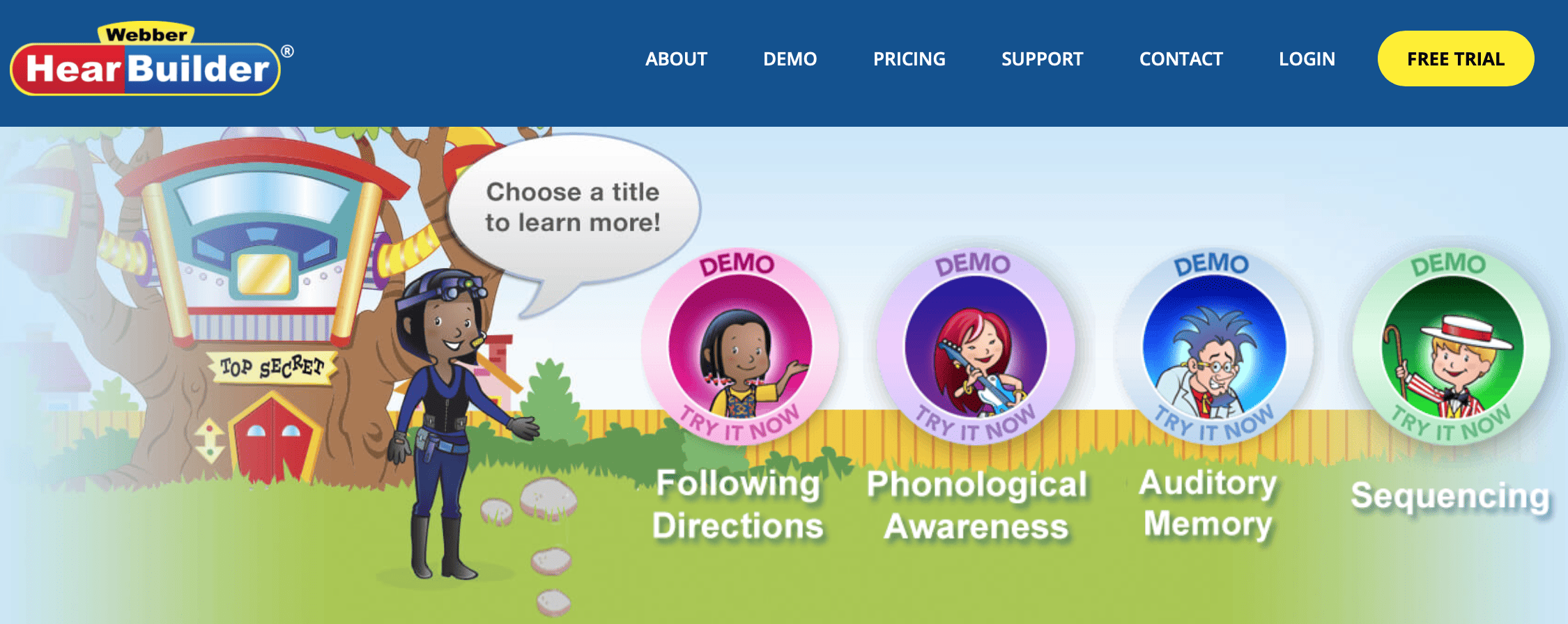
Step 10: Neurocognitive Training
Once your hearing system is stronger, Cheri recommends an age-appropriate computer game, like Hear Builder. Hear Builder improves auditory processing skills. However, Cheri ensures your vision stays clear and single during close-up work by talking with your optometrist.
For adults, about six or more months after completing auditory integration training, you are ready to begin neurocognitive Auditory-Visual Training. When adults have hearing loss and sound intolerance, they benefit from a computer program called Listening and Auditory Communication Enhancement, L.A.C.E.
The Last Step is Auditory-Visual Neurocognitive Visual Training
After Cheri talks with your optometrist to ensure your visual processing skills are strong, clients begin an auditory-visual computer program called Brain HQ.
Length of Time Cheri Works with Families
Cheri works with families approximately eighteen to twenty-four months. Twelve or more months after completing auditory integration training, most clients are ready to complete their last auditory integration training program. Clients have also typically completed vision therapy.
FDA Statement On AIT
“Auditory Integration Training remediates impairments in auditory discrimination (sound sensitivity and auditory distortion) associated with Autism, Learning Disabilities, and related disorders – ADD, ADHD, CAPD (Central Auditory Processing Deficits), SPD (Sensory Processing Disorder), Dyslexia.“
Moore Auditory-Visual Integration Training
Cheri Moore has been helping children and adults improve the brain’s ability to respond to intervention while minimizing negative behavioral responses.

